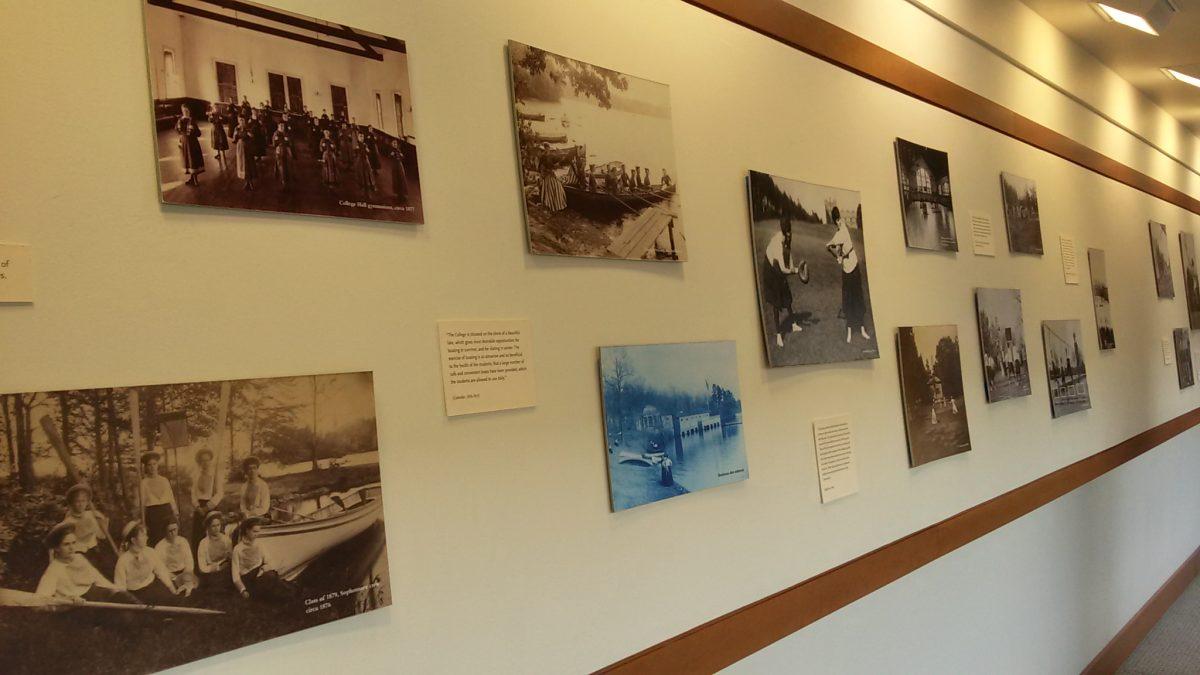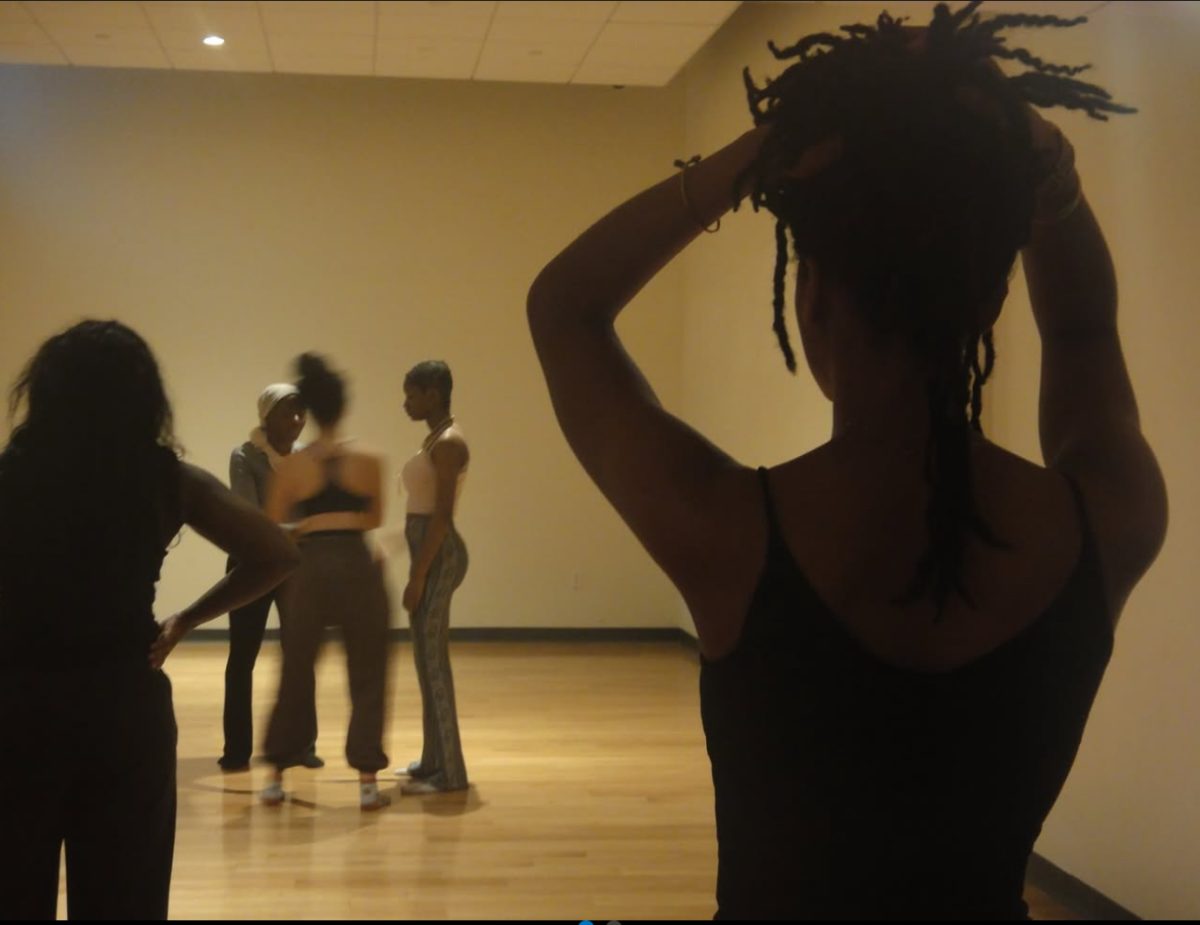Since the early 1970s, the Wellesley Archives has been collecting compelling pieces of the college’s history that date as far back as the establishment of the college itself. Located on the fourth floor of Clapp library, the Archives possess a narrative of Wellesley College as represented by student correspondences, information about organizations and events and even a remaining piece of tile from College Hall.
Laura Reiner, the research and instruction librarian, explained that the college obtains a great amount of personal memorabilia from alumnae and their family members for two reasons: alumnae have a lasting bond with the school and descendants may want to preserve the memory of family members who were students here.
“I think there’s a tremendous bond for many people especially over the decades,” Reiner said. “There’s a tremendous fondness and connection to the college, more so than when you are here perhaps. And it’s a way of remembering. It might be that your mother or grandmother went here, so it’s a way of honoring their memory to donate [memorabilia]. People hate to throw things out. If there is a way to keep from throwing out these treasured mementos, people constantly write us.”
The Archives have continued to receive new gifts and projects from various time periods in the college’s history. For example, the college recently requested that the archives scan photos related to the history of Jewett Art Center for a Getty grant. Interim Archivist Mary Yearl has been working at the college for about six months and has been a part of multiple new projects that the archives have taken on. One project that she is particularly excited about is the donation of an herbarium that two sisters, Linda and Isabel Puffer, had planted possibly for a botany class before they graduated in 1891.
“We have a similar herbarium, so it was quite clearly put together by a botany class that they took. What is unique about this one is that they dated every sample. So, not only are 81 of the 99 samples from Wellesley, but the dates make it possible to comparing when specific plants were flowering on campus in 1889 to when they flower today,” Yearl explained.
The Archives office also obtained a Council on Library and Information Resources (CLIR) grant, which supports, as they describe, the processing of “rare and unique content in cultural memory institutions.” The college is using this funding for materials from the Wellesley Centers for Women (WCW), which is a ground-breaking women’s research facility and part of the college’s history and legacy.
Materials that the WCW is sharing with the archives to make available include documents on the history of the institution, information about the people involved in the organization and more in-depth details on projects, budgets and meeting minutes. From there, they expanded their project to process papers from Irene Stivers and Jean Baker Miller, both of whom were involved in the WCW.
Once the office processes the WCW records, rather than digitizing the entire collection because this would be an expensive and a lengthy project, it creates a finding aid online for researchers who can access detailed information about the collection and then contact the Archives for direct access to the documents they wish to view.
Due to the historic nature of this women’s college the Archives office does receive requests to access more information for research projects. The archives can reveal information such as the demographics of the college.
“We get a lot of researchers looking at women’s education or history of gender and this is an important place especially for 19th century when women didn’t really have many opportunities. This was a place of opportunity. We [are] looking at early opportunities for women of color, we also just learned about the earliest Jewish student to graduate Wellesley. The first African American here to graduate with 1887,” Reiner said.
Yearl also expressed that although the finding aids can be helpful, by looking into the archives that the office holds on campus, researchers can find interesting and important information.
“Browsing through the finding aids will give some sense of the collections, but there is a lot that is hidden, too, so it always pays to ask us if we have material on a given topic. For instance, issues of national and international importance are reflected in activities on campus, but would not be pulled together into a unified collection,” Yearl explained.
The issues of national and international importance that are reflected in documents from the archives include the civil rights movement, gay rights and the liberation movement, divesting from South Africa, anti-war protests and, more recently, the change in gender policy and the Black Lives Matter movement.
In recent years, the Archives have been working to digitize material in order to make information on the college more accessible. However, due to limits on funding, the office digitizes information as it gets requests from researchers and organizations. This means that the works that are uploaded to the library archives are only a small portion of what is actually stored in the college archives. Marci Hahn-Fabris, the Digital Archives librarian, explained that digitizing documents from the archives is making the history of the college more accessible.
“Providing digital access to our collections makes them accessible to a much wider audience than has ever been possible before,” Hahn-Fabris said. “Digitized materials can lead to new avenues of research, serendipitous discoveries, all without having to physically be on campus — although seeing materials first hand definitely has it’s own merits. It’s also a form of preservation, by allowing access without having the materials touched excessively.”
The archives are continuously updated, and as times change, the material that the Archives preserve changes as well. Although it may be more difficult to find handwritten letters from current students to their families, Rainier explains that history is continuously happening on campus and the archive staff is constantly searching for new material to preserve. They believe that student organizations should be active in contributing to the archives in order to create a well-rounded perspective on the history and activities on campus.
“It is a really important point that we do need to tell the history of everyone and all groups on campus,” Yearl said.






